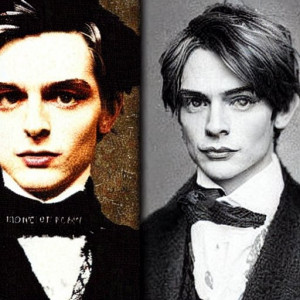The history of creation
The Picture of Dorian Gray, written by Oscar Wilde in 1890, is a novel about a young man named Dorian Gray who makes a Faustian bargain to remain youthful and beautiful while his portrait ages and reflects the consequences of his immoral life. The novel was first published as a serial in Lippincott’s Monthly Magazine from June 1890 to July 1891.
Wilde wrote the story over several months at Goring-on-Thames in 1889, while he was staying with his friend Robert Ross. He had been inspired by an earlier painting of Dorian Gray that he had seen at the studio of Basil Hallward, an artist friend who had painted it as part of a series depicting various characters from Greek mythology. Wilde used this painting as the basis for his character and plotline.
The novel caused controversy when it was first published due to its exploration of themes such as homosexuality, drug use, and decadence. It has since become one of Wilde’s most popular works and has been adapted into numerous films, plays, operas, and other media forms over the years.
Genre and literary direction
The Picture of Dorian Gray by Oscar Wilde is a work of philosophical fiction in the genre of Gothic literature. It combines elements of horror, romance, and morality to explore the consequences of hedonism and vanity.
Theme, idea, plot, composition
The theme of The Picture of Dorian Gray is the danger of allowing one’s vanity and hedonism to consume them.
The idea behind the novel is that beauty and youth are fleeting, and that those who focus too much on them will ultimately be consumed by their own vanity.
The plot follows a young man named Dorian Gray who makes a wish to remain forever young and beautiful, while his portrait ages in his stead. As time passes, Dorian becomes increasingly obsessed with maintaining his youthful appearance, leading him down a path of debauchery and moral decay. Eventually, he realizes the consequences of his actions when he sees the horrific effects they have had on his portrait.
Oscar Wilde employs satire throughout the novel in order to emphasize its themes. He also uses symbolism to illustrate how Dorian’s inner corruption manifests itself outwardly through his portrait’s deterioration. Additionally, Wilde utilizes Gothic elements such as horror and suspense in order to create an atmosphere of dread around Dorian’s descent into depravity.
Main characters
- Dorian Gray: The main protagonist of the novel, a handsome and wealthy young man who is corrupted by Lord Henry’s hedonistic philosophy.
- Lord Henry Wotton: A wealthy aristocrat and friend of Dorian Gray. He is the one who introduces Dorian to his hedonistic worldview, which ultimately leads to his downfall.
- Basil Hallward: An artist who paints a portrait of Dorian Gray and becomes obsessed with him. He is also a close friend of Lord Henry’s.
- Sibyl Vane: An actress whom Dorian falls in love with, only to later reject her due to her lack of sophistication and social standing.
- Alan Campbell: A doctor and friend of Lord Henry’s who commits suicide after being unable to cure himself from an opium addiction.
